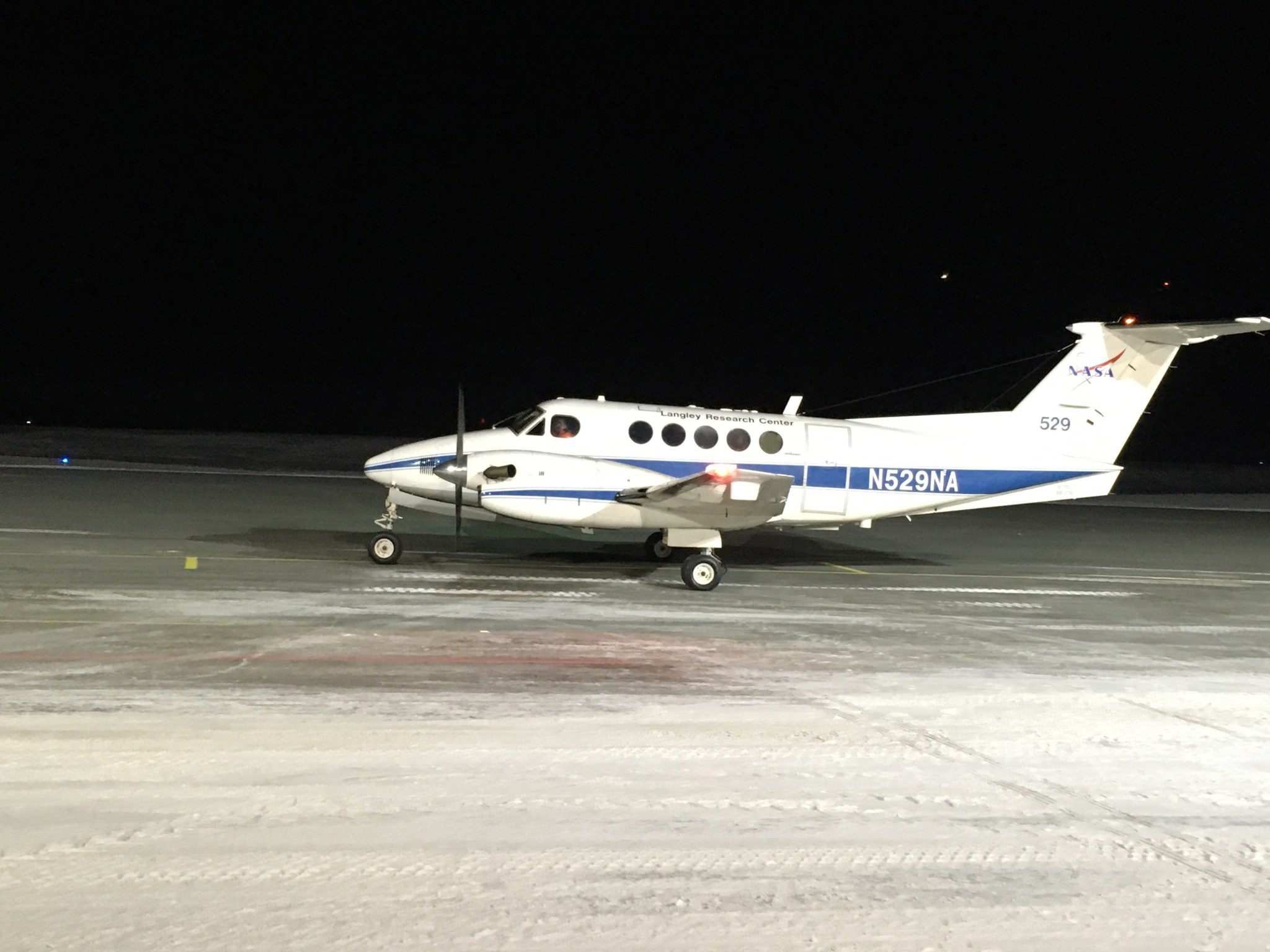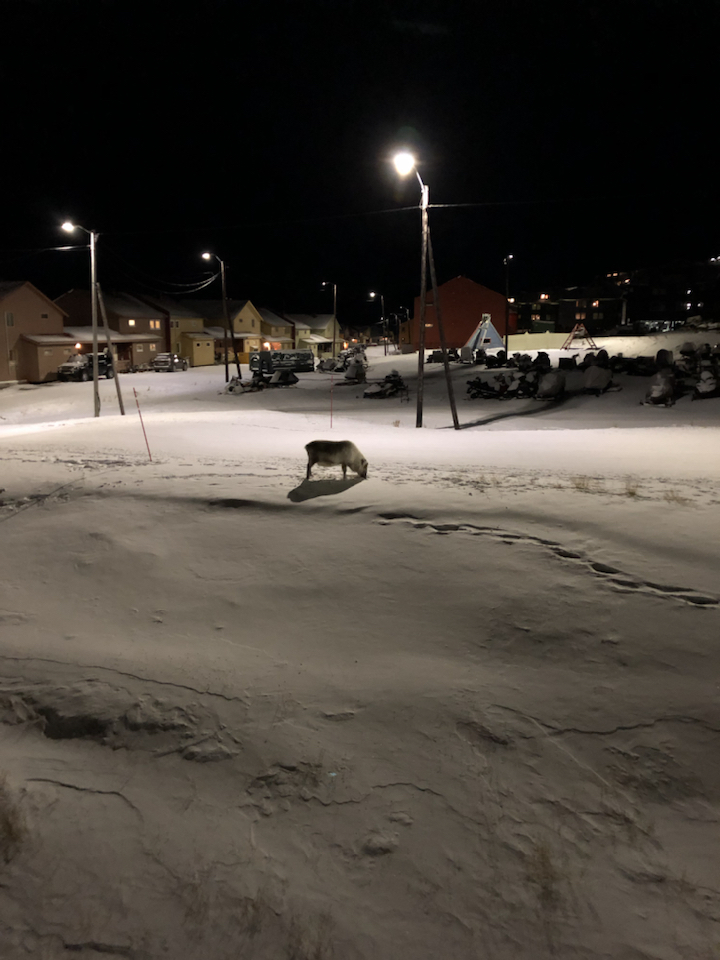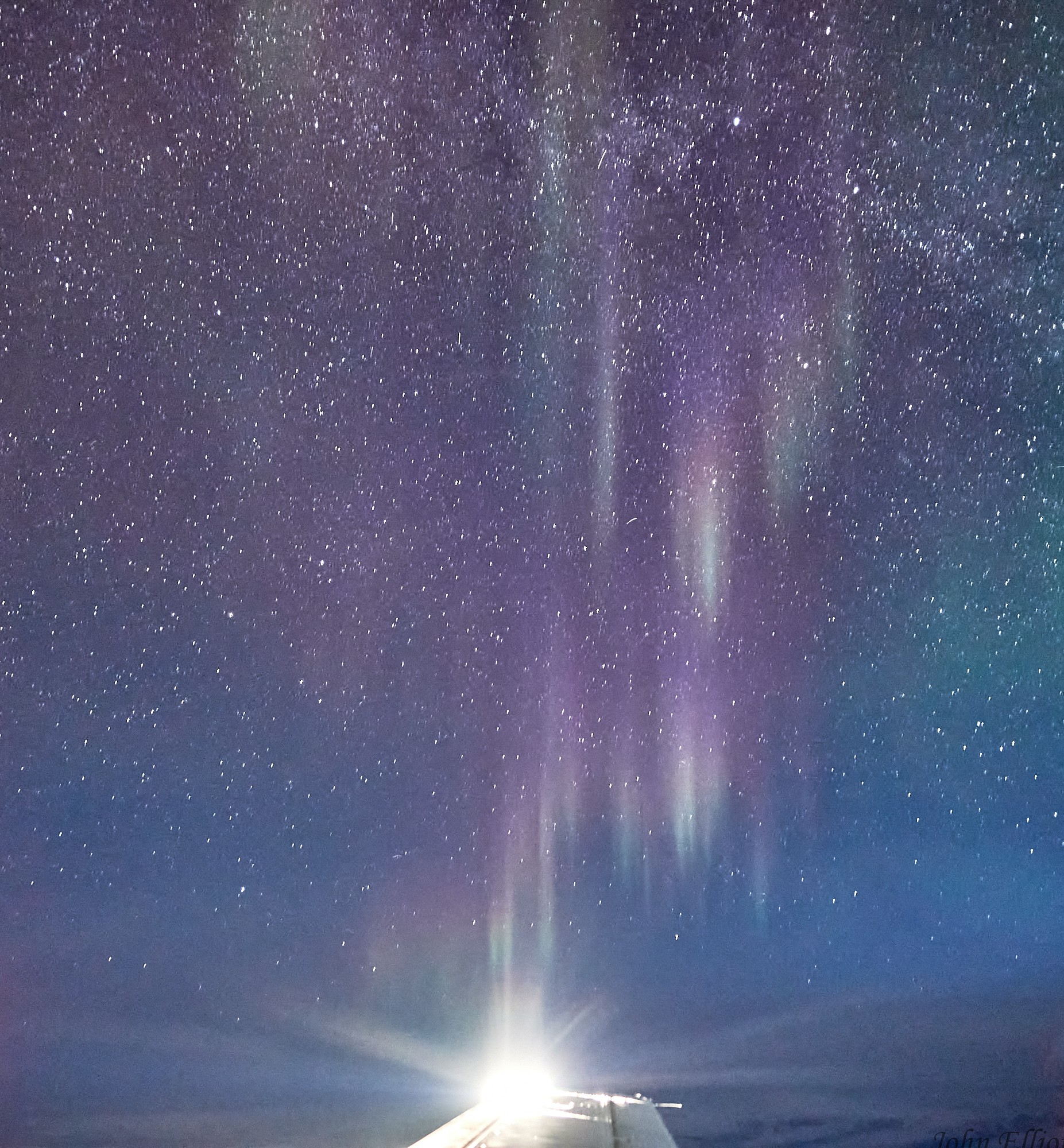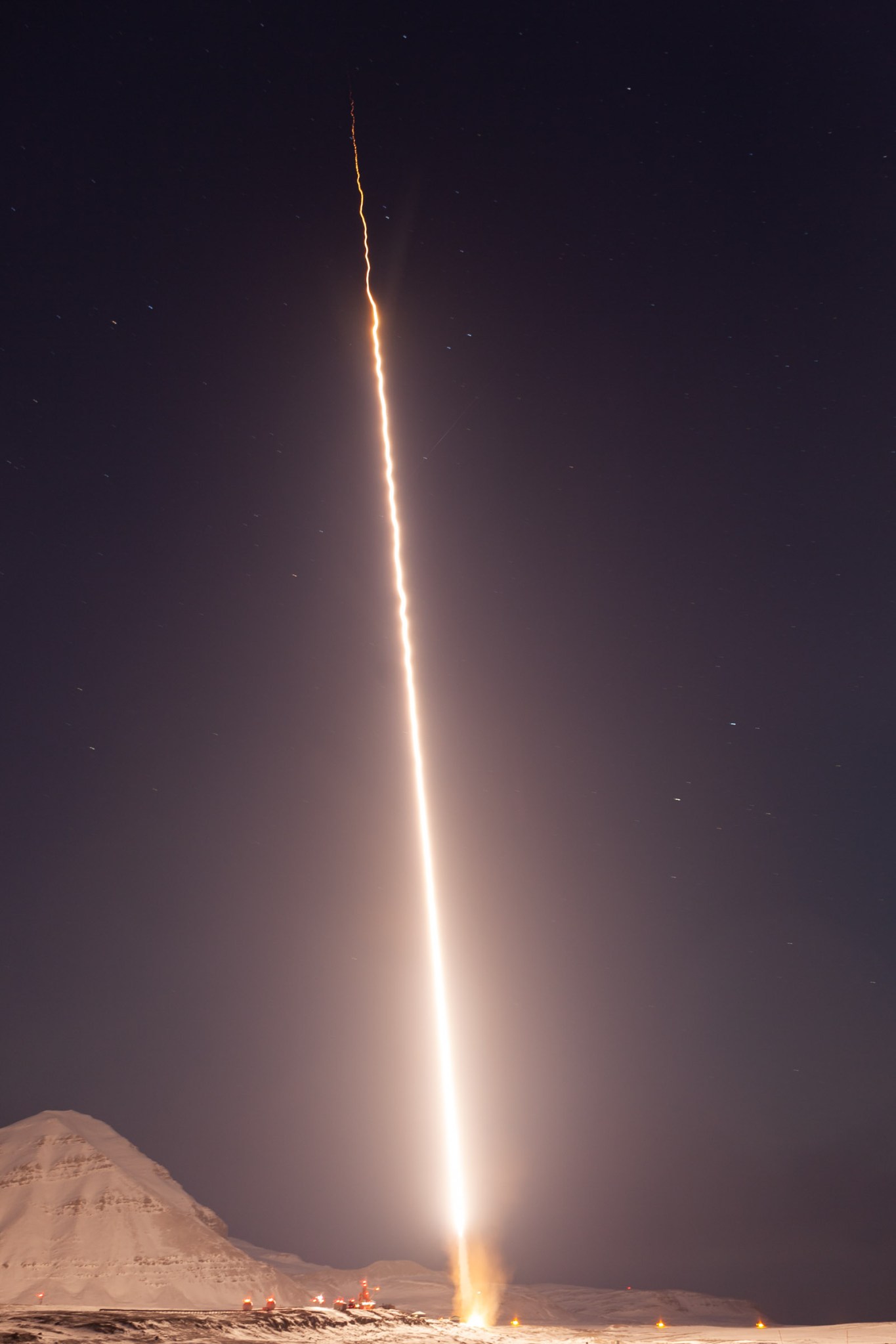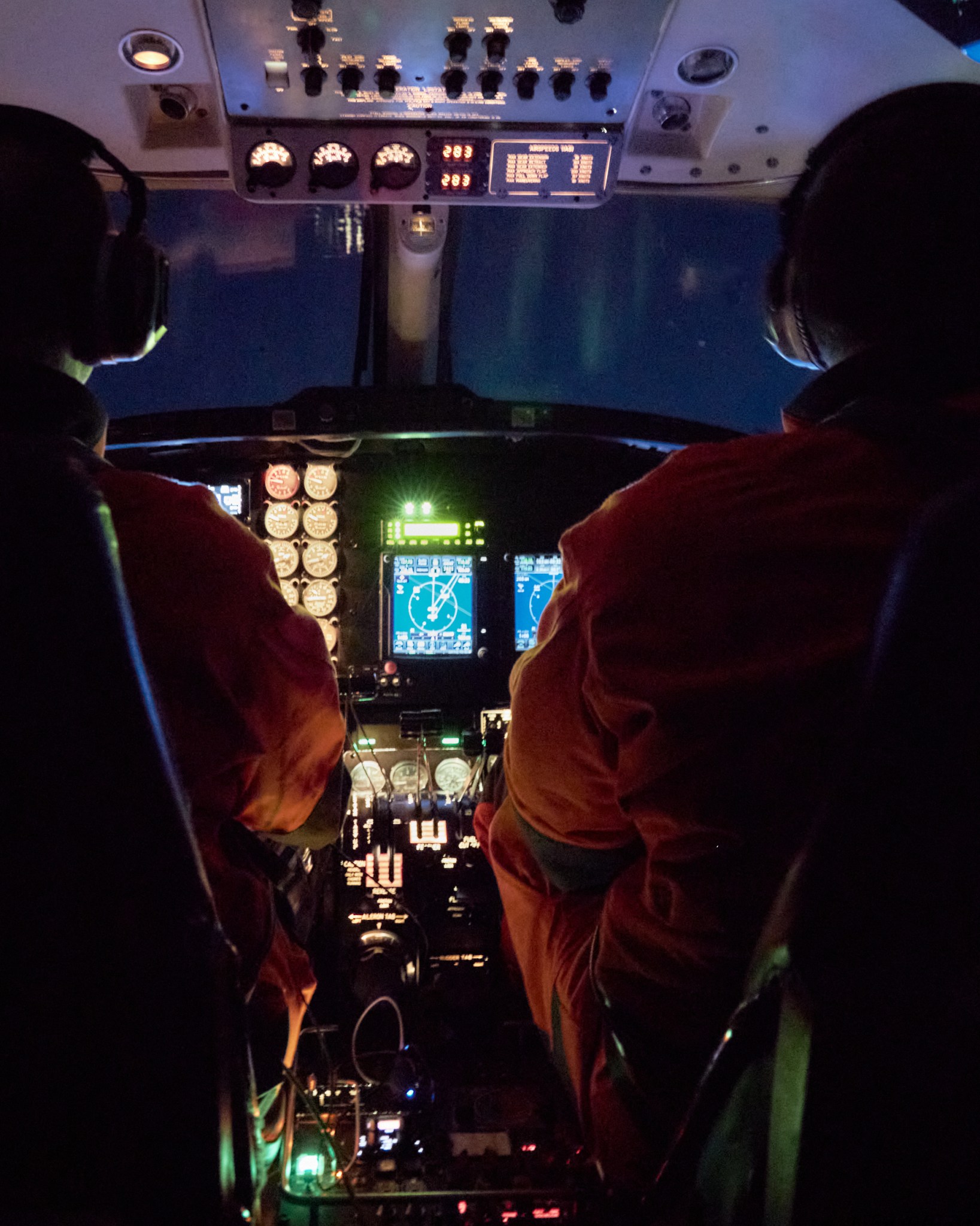
Svalbard, Norway: It’s one of the northernmost inhabited areas on Earth. At a time of year when it’s dark there around the clock — and yeah, a bit nippy — why would a small team from Langley’s Research Services Directorate (RSD) want to go?
It certainly wasn’t to sunbathe.
No, the four-person crew took Langley’s King Air B200 aircraft to Svalbard to provide airborne photographic support for the 2019 Norway Campaign. Conducted by the Sounding Rocket Program Office at NASA’s Wallops Flight Facility on Wallops Island, Virginia, the campaign was part of the larger Grand Challenge Initiative-Cusp, a series of nine sounding rocket missions exploring the polar cusp, essentially a hole in Earth’s magnetosphere that funnels solar wind downward before injecting it into the atmosphere. There are two polar cusps — one in the northern hemisphere and one in the southern hemisphere.
During the deployment, a camera suite on the B200 successfully recorded atmospheric chemical interactions during an experiment that measured cusp upwelling and heating due to small‐scale electric field fluctuations.
In addition to experiencing round-the-clock darkness on their journey, the Langley team saw the Northern lights, ate a Thanksgiving meal above the Arctic Circle and even spotted a reindeer — no red nose, though. Here are a few images from their trip.
